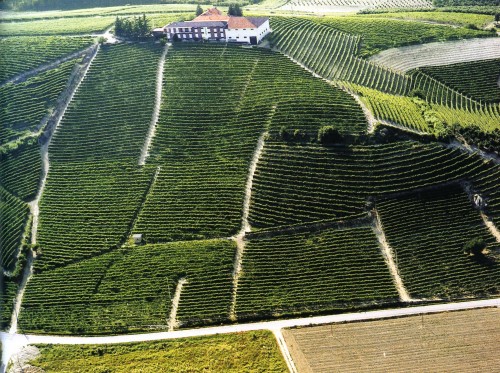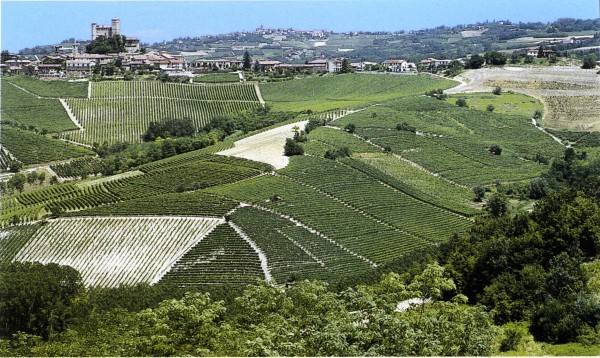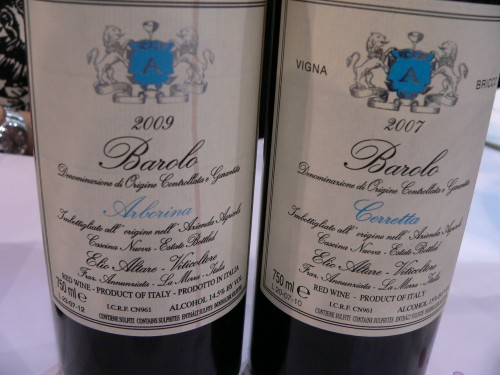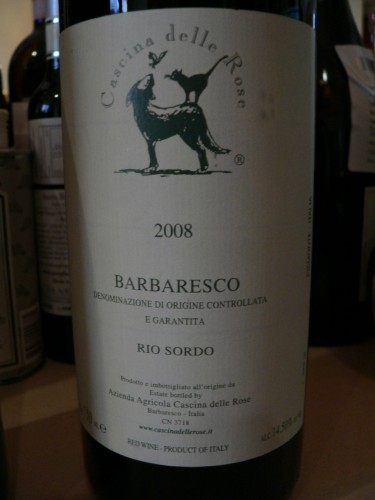Views: 27
Kerin O’Keefe 的新作令我溫故又知新,現把我學到的簡錄於下。
Barolo 是意大利人發明的
Barolo 原來是甜酒,按流行的說法,今天我們喝到的乾紅 Barolo 是 Marchese di Barolo(Barolo 地區男爵)Carlo Tancredi 的夫人的功勞。男爵夫人 Giulia Falletti 出生於法國貴族之家,傳說她在 19 世紀中葉找到一位名叫 Louis Oudart 的法國人用法國流行的釀酒法把 Barolo 改造為乾紅。
Kerin 指出發明者其實另有其人,而且來自今天的意大利。Paolo Francesco Staglieno 是一位深懂釀酒的將軍,他 1835 年便寫成一本釀酒手冊,鼓吹徹底發酵葡萄為乾酒的方法,從 1836 到 1840 年代他被撒丁尼亞國王 Carlo Alberto 聘用為釀酒師,那時便開始釀造 Barolo 乾紅。Louis Oudart 原是酒商,他從 Genoa 抵達 Alba 時, Staglieno 早已開始釀造乾紅的 Barolo。
The King of Wines, the Wine of Kings
Carlo Alberto 不止在他的莊園釀酒,後來又買下了 Castello di Verduno 擴大生產。他的兒子 Vittorio Emanuele 後來繼承王位,並在 1861 年成為意大利獨立後的第一位國王,這位新國王其後又在他的狩獵別墅 Fontanafredda 種植 Nebbiolo 來釀造 Barolo。
原來的王室釀的酒專為自己和貴族享用,Vittorio Emanuele 的兒子 Emanuele di Mirafoiore 更進一步成立公司,把 Barolo 從貴族帶給廣大市場。
Barolo 之所以稱為 “The King of Wines, the Wine of Kings” 原因在此。
為何 Barolo 與 Barbaresco 是小農的天下?
這與法國的 Burgundy 有著相同的歷史緣由﹕拿破崙。話說從 1796 到 1815 年,拿破崙入侵意大利北部,之後更控制了整個意大利,但法國人的革命,始終在北部地區最為徹底。法國人在佔領期間引入共和制,充公大量教堂物業,很多猶太人買下了這些教產,然後分拆成小塊再賣給小農,所以這裏的小農比 Tuscany 的佃農制要流行。由於農民買地曾作出巨大犧牲,他們的子孫後來雖然歷盡磨難,也對土地不離不棄,這種傳統一直維持至今。Tuscany 的土地更多由貴族大地主擁有,由佃農作多種農作物的耕種,第二次大戰後農民跑到城市當工人,很多貴族唯有把土地賣給從城市回流農村的「城歸派」(如 Soldera 與 Montevertine),但這種例子在 Piedmont 地區不多見。
注意﹕酒莊的分區按酒窖所在而不是葡萄園,因為葡萄園可以誇數區的。
Barolo 產區
Barolo and Novello
 Cannubi (取自 A Wine Atlas of the Langhe)
Cannubi (取自 A Wine Atlas of the Langhe)
- Barolo 村的產量佔整個 Barolo 產區的 12%
- Cannubi 之所以特別,是因為兩種土壤在這裏匯集 — “The magnesium rich Tortonian soils, which contain more sand and produce more elegant and fragrant wines; the heavier, limestone Serravallian soils rich in calcium carbonates, which produce more structured and tannic wines.” 這種組合令這塊田在正常與潮濕年份表現較乾燥年份好﹕ “the sandy component allows Cannubi to excel in years with normal climatic conditions; it also performs better than other vineyard areas in wet years thanks to well-draining soil. However, in dry, hot years, it suffers more than many other vineyard sites because its soil does not retain humidity”.
- Bartolo Mascarello﹕Maria Teresa 接掌酒莊時,父親要她答應永遠不用法國小木桶來造「木匠酒」(carpenter’s wines)。為保萬全,老先生還買了多個 Slavonian 大木桶,把酒窖的每寸空間都塞得滿滿的,讓一個小木桶也放不進。我後來問過 Maria Teresa 此事,才知道這不過是個笑話。
- Giuseppe Rinaldi﹕在酒窖的角落有張原始的椅子,上面手書「小木桶的最佳用途」(The Best Use for Barriques)。
- Luciano Sandrone﹕我們都知道 Sandrone 採用 500 公升的中型法國木桶,這些木桶用 5 次,他的 Barolo 只用 20-25% 的新桶。
- Elvio Cogno﹕與 Giuseppe Marcarini 拆伙後回到老家 Novello 成立自己的酒莊,今天由女兒 Nadia 與女婿 Valter Fissore 掌管,旗艦酒 Ravera,特別好年份推出單一葡萄園 Vigna Elena(Rose 品種),另有 Bricco Pernice 是 “Barolo-lovers’ Barolo”。
La Morra and Cherasco
- La Morra 是最大的村子,產量佔整個 Barolo 產區的 ¼。
- 土質﹕乾燥年份比其他村子常有較好表現 — “The Tortonian soil consists mainly of Sant’Agata Fossili marls … also the highest amount of clay and the least amount of sand, sandstone, and calcium carbonate … more humid and are able to create water reserves … tends to perform better in those years when rainfall is scarce in the summer and autumn …”
- Elio Altare﹕除了他的 Arborina 葡萄園以外,近年他們先後租或買了 Cerretta(Serralunga) 和 Cannubi(Barolo)的小塊田。Kerin 認為 2006 Cerretta 是她試過最優雅的 Serralunga Barolo。Kerin 寫這本書的時候,Cannubi 還沒推出;Antonio Galloni 評論第一個年份 2011 時說﹕“If Musigny were made in Barolo, it would taste like this.”
Castiglione Falletto
- 小村位於 Barolo 產區的正中央,土質最多樣﹕“(1) Marls – ranging in color from grayish-white to bluish and containing 25-30% calcium carbonate; (2) Clayey, yellow-reddish-brown soils poor in calcium, and (3) Sandy soils with 15% calcium carbonate and 15-20% sandy quartz”。所以酒的風格也最多樣﹕“Given the undisputed complexity of the soil, it’s no surprise that Castiglione Falletto Barolos tend to be among the most multifaceted, combining perfume, elegance, and depth”
- Paolo Scavino﹕今天他們的 Barolo 頭一年在法國小木桶陳年(15-20% 新桶),第二年在法國與奧地利大木桶。Erico 的女兒 Elisa 正試驗全用奧地利大木桶釀酒。
-
Gigi Rosso﹕Gigi Rosso 與 Bruno Giacosa 及 Beppe Colla 三人對產區最好的葡萄園認識最深,所以他有眼光在 1960 年代早期買下 Serralunga 最南端的 Arione,比 Giacomo Conterno 買下旁邊的
Cascinia Francia 早了 10 年左右。Gigi 一直把葡萄賣給好友 Bruno Giacosa,到 1979 年他才成立酒莊自己釀酒。兩年前我在香港酒展踫到 Gigi 的兒子 Claudio 時,他笑說他們吃虧是因為他的祖父沒有鄰居(Giacomo Conterno)那麼有名氣。
Serralunga d’Alba
- 產量佔整個 Barolo 產區的 16%。
- Serralunga 是窄長的南北走向的高地,風格比較統一,Barolo 愛好者少能抗拒,所以 Kerin 說﹕“Of all Barolos, the mere mention of single-vineyard bottlings from Serralunga d’Alba’s hallowed crus, including Vigna Rionda, Lazzarito, and Cascina Francia, can cause Barolo lovers to go week in the knees”。皇者之皇在此!
- 究其原因,是這裏獨特的 terroir﹕“Serralunga’s vineyards contain the highest levels of calcium carbonate; the most prized vineyards are among the highest in the zone, and many parcels boast full southern exposure … this prolongs Nebbiolo’s growing season, yielding some of the most austere and powerfully structured Barolos of great complexity that in top vintages can evolve and maintain for decades … Wines hailing from the highest altitudes, from Falletto, for example, possess an enviable combination of power and finesee.”
 Vigna Rionda (取自 A Wine Atlas of the Langhe)
Vigna Rionda (取自 A Wine Atlas of the Langhe)
- Massolino﹕Vigna Rionda 為甚麼是 Grand Cru 中的 Grand Cru?莊主 Franco Massolino 解釋道﹕“The famed hillside is protected from cold winds and frost by the hill just in front of it, which forms a unique microclimate in Vigna Rionda. Nebbiolo grown here bud earlier thanks to the warmer temperatures, and the vines have a longer growing season than they in in our other vineyards. While the cru possesses the lightly colored, nearly white, calcerous soil typical of Serralunga, it also contains darker soils composed of oxidized iron elements.”
- Cappellano﹕Kerin 的至愛是他們的 Barolo Otin Fiorin Pie Franco 嗎?“Made exactly like the firm’s other Barolo, this wine hails from ungrafted vines planted in 1989 from a missal selection of Cappellano’s best Gabutti vines. This isn’t just one of my favorite Barolos; it is one of my favorite wines.”
Monforte d’Alba
- 產量佔整個 Barolo 產區的 20%。
- Monforte 與 Serralunga 的 Barolo 最有結構,但 Serralunga 風格比較統一,Monforte 卻因為土質、坐向與微氣候的差異而有比較多樣的風格。“Monforte’s Serravaillian soil is composed predominantly of sandstone and clay, and although many people compare its soils to those found in Serralunga d’Alba, in terms of soils, Monforte is actually more similar to Castiglione Falletto … Monforte has a large section of Castiglione Falletto units (mostly around the Pian Polvere area), La Morra units dispersed throughout, and in the area considered the classic part of Bussia (before the latter was recently expanded), Barolo units — composed of calcareous marls interspersed with layers of sandstone in the subsoils.”
- Giacomo Conterno﹕Roberto Conterno 從 1988 年起接管,他基本上蕭規曹隨,改動有二﹕“Abandoning stainless steel and fermenting in conical wooden vats, which better maintain the steady, high temperatures required for the long maceration process; about 15 years ago, Roberto also introduced large, neutral Austrian casks for aging, alongside traditional Slavonian casks.”
- Aldo Conterno﹕他的革新包括 “Reducing the marathon fermentation and maceration times that were once customary for Barolo, and also abandoning the submerged-cap method in favor of pumping over — radical decisions for the times.”
- Franco Conterno: “His quintessential Barolos are one of Piedmont’s best-kept secrets … Barolo Riserva “Sette7anni” 2004 is made only in outstanding vintages from Bussia Munie, Pugnane e Panerole, aged for 7 years in traditional botti … a little-known gem just waiting to be discovered by the world’s Barolophiles.”
- Principiano Ferdinando﹕推動「天然酒」,而且喜歡不除梗發酵﹕“when the stems are perfectly ripened, they add noble tannins to the wine, and also acidity. These are both natural wine preservatives, and help me make a wine that will age well over many years.” Kerin 說﹕“They are some of the most fascinating Barolos out there.” 尤其要留意他們的 Boscareto — 葡萄園位於 Cascina Francia 之北略低的位置,50 歲老藤所出葡萄用腳踏法破皮,60 天泡皮,4 年在大木桶陳年。
Verduno, Grinzane Cavour, Roddi, and Diano d’Alba
- Verduno 被 Kerin 讚不絕口﹕“I’ve long been a huge fan of the elegant, floral, and spicy Barolos of Verduno, and lately even more so, since the area appears to have suffered less in the recent bout of exceedingly hot and dry vintages … even though Verduno Barolos tend to be approachable sooner than many other Barolos, they also have essential structure for lengthy aging, as was beautifully demonstrated by a magnificent 1982 Castello di Verduno La Massara, tried in December of 2011.”
- 原因始終是 terroir﹕“Verduno’s soil is complex … composed of Barolo Units, Serralunga Units, and Verduno Units … the Verduno Units are unique in Barolo … it is Verduno’s soil that imparts the spicy character to the village’s Barolos”.
- “The 11-hectare Monvigliero is the village’s Grand Cru, … other great vineyards include Breri, Pispola, and Massara.”
- 值得留意的酒莊﹕Comm. G.B. Burlotto, Castello di Verduno, Fratelli Alessandria。三家酒莊都源自 Burlotto 家族。
- Burlotto Barolo Monvigliero﹕“Made from vines ranging between 20-60 years old from the best parcels, this is a Barolo-lovers Barolo and perhaps the most stunning expression of this famed cru.” 不除梗,60 天泡皮,submerged cap。
Barbaresco 產區
這裏近年出現很多不見經傳的小酒莊,有些以前只種葡萄,近年才開始自己釀酒,再加上 Tanaro 河可以對炎熱的天氣起到緩和的作用(見本文上篇),所以 Barbaresco 最值得狩獵。這裏列出 Kerin 介紹過的酒莊﹕
Barbaresco
- Gaja
- Produttori del Barbaresco
- Cascina delle Rose (“one of the true gems of Barbaresco and produces some of the most elegant and delicious wines in the entire Langhe”)
- Roagna
- Albino Rocca﹕2004 年開始轉用奧地利大木桶後,酒質脫胎換骨
- Cantina del Pino
- La Spinona
- De Forville
- La Ca’Nova
- Giamello Silvio – La Licenziana
- Giuseppe Cortese
- Olek Bondonio (“my favorite of Barbaresco’s young wineries … making gorgeous, earthy Barbarescos of intensity and balance”)
- Musso
- Socre
Neive
- Bruno Giacosa (根據女兒 Bruna 所言,他們從 2012 年開始不再釀 Santo Stefano 的原因是﹕“… this was because the owner of the vineyard, Italo Stupino, not only replanted the vineyard, meaning the grapes are very young, but her firm no longer has any control or input in the management of the vineyard”。Kerin 的解讀﹕“Now that Bruno can no longer walk the vineyards and personally choose the grapes or make any suggestions regarding vineyard management, and since there seems to be no one at the winery stepping up to this task, I think the winery will focus more on wines made from their estate grapes and less on wines made with sourced fruit.” )
- Castello di Neive
- Piero Busso
- F.lli Cigliuti
- Ugo Lequio (“In all the Barbaresco tastings — both open and blind — that I’ve done voer the last decade for the many articles that I’ve written on Barbaresco and for this book, I have consistently given Ugo Lequio high and very high scores. Ugo Lequio is synonymous with Gallina, one of the historically great crus in Neive”)
- Cantina del Glicine
- Sottimano (“In the past I had found his wines to be be reliant on new oak and too opulent for my tastes … his 2009 and later 2010 Barbarescos possess the character, authenticity, and sense of place that they had lacked before … producer Andrea has drastically cut down on new wood, and also eliminated all chemicals … a trained enologist and also disciple of the classic Burgundian school and a believer in the greatness iof Nebbiolo.”)
- Luigi Voghera
Treiso and San Rocco Seno d’Elvio
“With rising temperatures, Treiso’s higher vineyards are proving to be an advantage now that Nebbiolo is fully ripening in these elevated reaches while still maintaning freshness”
- Rizzi (“one of the rising stars of the entire Barbaresco denominations … Barbarescos of bredding that are both subtle and sublime”)
- Pertinace
- Ada Nada
- Nada Giuseppe
- Pier (“Not only do they have ideal vineyards, but the firm recently started working with consulting enologist Dante Scaglione of Bruno Giacosa fame … the estate is one of my most exciting discoveries uncovered while researching this book”)
- Adriano Marco Vittorio
- Poderi Colla

